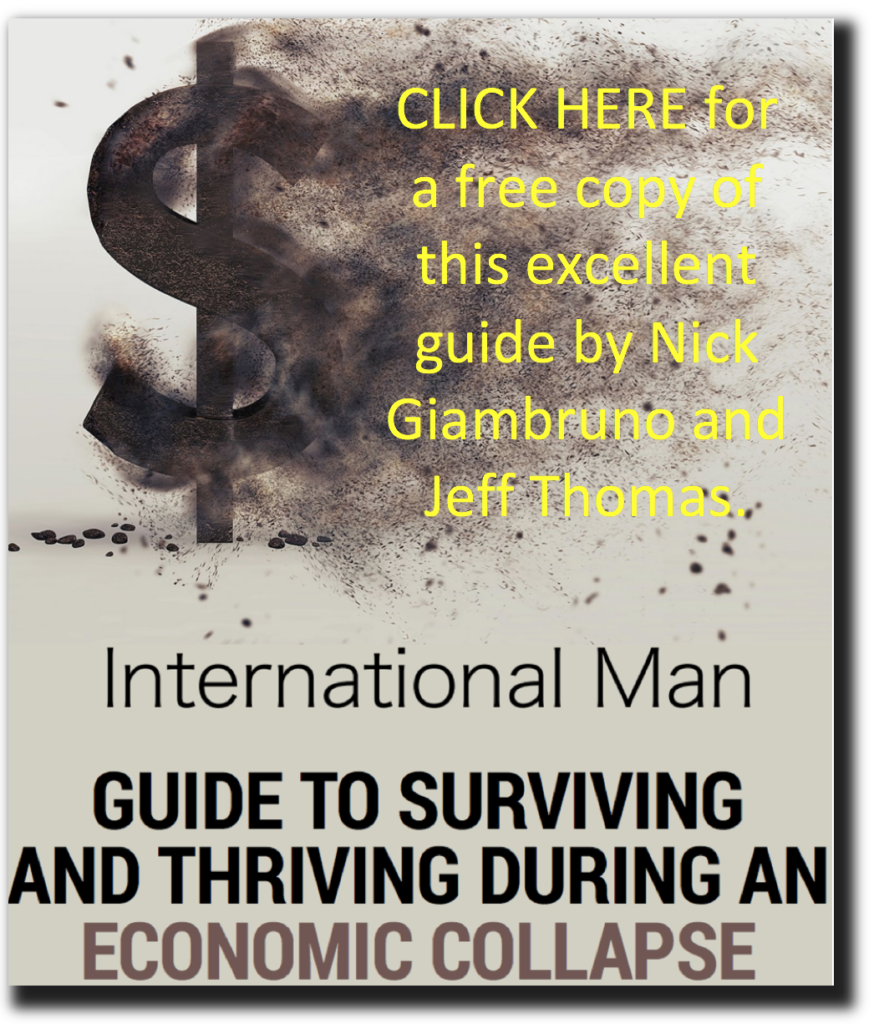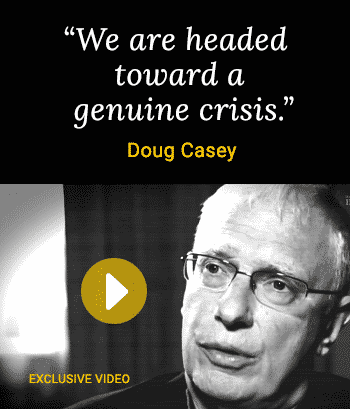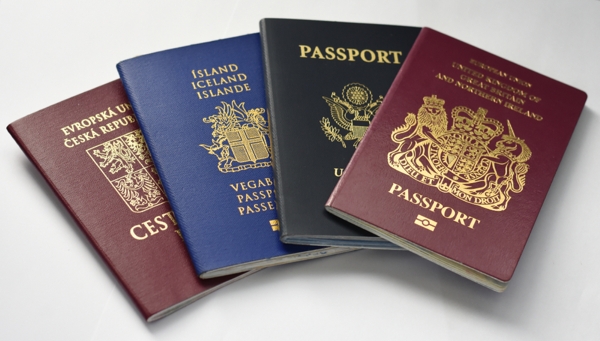Doug Casey’s REAL State of the Union – The Second Amendment, Part II
by Doug Casey

Joel Bowman: G’day, Doug. Ready to talk guns again?
Doug Casey: It’s one of my favorite subjects.
JB: Great. Faithful International Man readers will, of course, recognize this discussion as part of our ongoing conversation titled: Doug Casey’s REAL State of the Union. The idea is to use the first ten amendments to the U.S. Constitution – also known as the Bill of Rights – as a kind of measuring tool to see just how present day America fairs in relation to its founding ideals.
DC: Of course, the Constitution is pretty much a dead letter these days, the Supreme Court having more or less interpreted it out of existence. The only parts that are strictly observed have to do with procedural matters, like how the Vice President breaks a tie vote in the Senate. Anything in the Bill of Rights, which spells out limitations on the State, is regarded as an academic curiosity. Still, it’s a useful framework for discussion purposes.
JB: Indeed. When we left off last week, you were describing the changing character of America and explaining how gun violence is really a cultural problem, not a political one. Still, that hasn’t stopped prohibitionists from ignoring the lessons of history.
DC: Yes, first they illegalized automatic weapons in the 1930s, as a reaction against gangsters using Thompson submachine guns against each other during Prohibition. It’s a prime example of the State creating a huge problem—Prohibition—then using it as an excuse to create more problems.
I love automatic weapons. They're fun to play with—although greatly overrated as combat weapons. Then they illegalized silencers— suppressors, technically speaking. They allow you to shoot without annoying other people nearby. Most of what Americans think they know about guns today comes from TV and movies. Which means their heads are full of misconceptions, inaccuracies, and propaganda.
Next they outlawed large caliber weapons, like the 20mm rifle. Back in the early '60s, before the laws passed after the Kennedy assassination, you could buy rifles through the mail. $99—about $600 in today’s money—would get you a Lahti anti-tank rifle. I would have bought one, except for the fact it was more money than I had then.
Guns have become objects of fear and hysteria. Franks Sinatra, Sammy Davis Jr., and the rest of the Rat Pack made a movie in 1964 called “Robin and the Seven Hoods”. In it, Sammy sings a great song in praise of guns—he was personally quite a gun guy. No way could that song be featured today. We’re the worse of because of it.
JB: Readers with “modern sensibilities” will likely be shocked imagining such weapons available for purchase today. Of course, if someone really wanted to cause serious harm, they could just as easily drive a car into a crowd or use a match to burn down a theater…
DC: A good ol’ Molotov cocktail would be at least as effective in any crowded place.
JB: Ban gasoline, bottles and rags!
DC: That’ll be next. Anything but addressing the real problem.
JB: Which is?
DC: At a minimum, it’s asking what kind of psychological issues these people who shoot up a theater or a school might have. What’s going on in their home life, their relationships with their family and with their community? What kind of prescription drugs are they doing, to alter the way their brains work? And why is their government committing them to wars around the world, desensitizing them to violence and feeding the military industrial complex at the same time?
You want to have good answers to these questions. Because frankly, if one or more of these people attack your house in the middle of the night, in a home invasion, how are you going to defend yourself? What, are you supposed to engage in unarmed hand-to-hand combat with them in your pajamas?
That's why everybody should have a gun, and know how to use it. And be willing to use it. Further, there should be no penalties, and limited questions, about using it on an invader on your own property.
JB: In that example, the multi-attacker scenario, one might think a small woman would be at a considerable disadvantage. Without guns to level the field, it’s really a case of might over right. As the old saying goes, “God created man. Sam Colt made them equal.”
DC: That's absolutely right. Gun control discriminates against small people. Entirely apart from the fact that my definition of gun control is an ability to hit the target, we can't have discrimination, not in today's world, can we?
JB: I wonder what all the #MeToo marchers have to say about their being discriminated against, with regard to prohibition on self-defense?
 DC: I doubt they even recognize their own inconsistency, because they all believe in the most irrational entity of all – the State. The State is their mother and their father. They think the state should protect them – and you – from whatever dangers there are in the world, including criminal people. An impossibility.
DC: I doubt they even recognize their own inconsistency, because they all believe in the most irrational entity of all – the State. The State is their mother and their father. They think the state should protect them – and you – from whatever dangers there are in the world, including criminal people. An impossibility.
Their whole mindset is absurd, perverse, and destructive. Frankly, it’s improper to argue about whether people should be allowed to have guns under this law or that, including the Second Amendment. Your freedoms shouldn’t depend on what was written on a piece of paper 200 years ago—although it’s nice they’re written down.
In any case, real freedoms don’t rely on the government. It’s the main threat to them, as an agent of violence and coercion.
Ultimately, it's none of the government's business what an individual keeps as his own private property, and the people that want to regulate these things are psychologically bent, at best. They're despicable.
JB: Fortunately, the advent of 3D printing is rendering this discussion as more or less academic even as we’re having it. Anyone who wants a gun now, whatever the laws happen to be, can go into their garage or their hobby shop, and with a CAD file and a few clicks of their mouse, can print out their very own gun.
Defense, like so many other things in the modern, Digital Age, is becoming decentralized.
DC: That's right. A printed gun may not be as durable and accurate as a properly manufactured steel gun, but as the materials and the technology gets better, so will these printable guns. Which, incidentally, won't have serial numbers on them, either.
I think the way that these anti-freedom people are going to go, however, is outlawing ammunition. If not outlaw it, tax it heavily. You can't shoot unless you have bullets.
And most of us, even if we're in a position to print out our own guns, are not in a position to manufacture primer caps. Or fabricate the powder. But then again, as technology advances further, hopefully electromagnetic devices will allow us to launch bullets almost as well as gunpowder does. Flash Gordon-style ray guns are just around the corner, as laser and battery tech advances.
JB: It's somewhat ironic that, in many ways, gun prohibitionists are actually driving and inspiring the technology when it comes to 3D printing. Where there’s a will, the market will find a way. Whether it's alcohol or drugs or guns, if people want them, they’ll get them…at a price.
Of course, driving desired goods and/or services “underground” only raises the profit incentive for anyone looking to enter the market. Al Capone would have been nothing if it were not for the Temperance Movement. Likewise, South America’s drug kingpins owe their fortunes almost entirely to the long failed War on Drugs.
Why would anyone knowledgeable of this history want to see an Al Capone or a Pablo Escobar of arms trading?
DC: Well, you'll find that the people who are against other people owning guns, are exactly the same people who want to control everyone else’s life in every other regard. They're against financial privacy. They're for welfare. They're for taxes. There's a whole list of these things. People who want them are a certain psychological type.
It’s not enough that they mind their own business; they have to mind yours, too!
JB: The ultimate hypocrisy is that many of those people, the so-called “Limousine Liberals” and their self-righteous celebrity friends, participate in marches to ban guns… so long as they are surrounded by armed bodyguards themselves.
These are the same people who have zero compunction collecting paychecks for acting in shoot ‘em up gangster movies and films that glorify war and the military and the State, purveyors of the biggest, baddest guns of all.
DC: There’s really nothing beneath these people. The hypocrisy ought to be glaring, but I doubt they’re even aware of it.
JB: Well, we’ve already paid them more attention than they deserve, so let’s move onto another subtopic. Doug, I know you’re a collector and a sportsman. What about some of your favorite guns? What would you recommend people own, for protection or just for sport?
DC: Yes, that’s a better use of our time. Let’s put theory into practice. My favorite pistol is a 1911 Government model in .45 caliber. They have a lot of hitting power, and they're accurate. Fantastic guns, even if a bit retro, a bit old school.
Of course, everybody likes Glocks, because they're very simple, plastic, very light, and they shoot perfectly, right out of the box. And you can get them in very small sizes, so they're great for concealed carry.
When it comes to rifles, the AK-47 is wonderful because it’s foolproof, unbreakable, and ultra-reliable. I love the AR-15 variants, as well. I have several of both.
And of course, everybody ought to have a pump-action or a semi-automatic shotgun.
JB: For home invasions?
DC: Home invaders and other varmints.
JB: Well said. How about preparing against varmints and would-be invaders in other countries? International Man readers will no doubt be interested to know what countries outside the U.S. have a good record of securing the individual's rights to bear arms.
DC: In Argentina, you can own all the guns you want. Here in In Uruguay, where I am at the moment, you can own three per person, your choice of which. It's quite easy. Brazil used to be very good, it's getting better now, but most of South America is pretty good. Asia and Europe are terrible. So South America, in today's context, gets a C. Asia and Europe get Fs.
The U.S., in today's context, gets a B. It's not bad, comparatively. Almost anybody can buy and keep as many guns as they want. With the exceptions we talked about earlier.
The problem is the average American, especially the young ones. Although they're absolutely sated with gun violence in the form of cops shooting things on television, they’re deathly afraid of actual weapons, don't know anything about them, or how to properly and responsibly use them. Worse, they don’t understand they suffer from a slave mentality. So the American population gets a D. They're actually worse than the government itself. Which doesn’t augur well for the future.
JB: Yeah. Well, I guess they're the ones who keep electing them.
DC: Democracy at its finest.
JB: Thanks again for taking the time, Doug.
DC: My pleasure, Joel. Talk to you next week.
(Ed. Note: If you're just joining us, you can catch up on the first installments of the discussion here: Freedom of Religion, Freedom of Speech, Freedom of the Press, Freedom of Assembly and The Second Amendment, Part I)
Editor's note: Clearly, there are many strange things afoot in the world. Distortions of markets, distortions of culture. It’s wise to wonder what’s going to happen, and to take advantage of growth while also being prepared for crisis. How will you protect yourself in the next crisis? See our PDF guide that will show you exactly how. Click here to download it now.
Tags:






